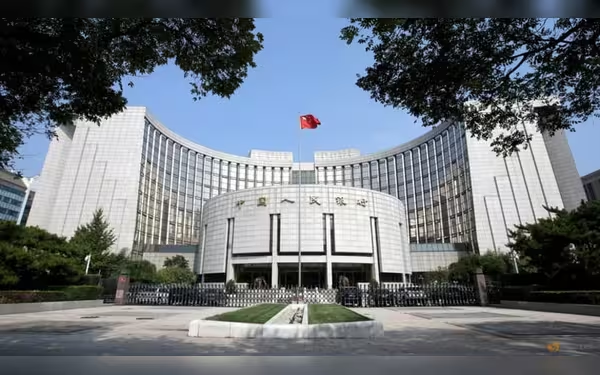Saturday, November 16, 2024 05:49 PM
China Central Bank Launches 500 Billion Yuan Swap Facility
- PBOC initiates 500 billion yuan funding scheme.
- New facility aims to enhance stock market liquidity.
- Concerns arise over financial institutions' participation.
 Image Credits: channelnewsasia
Image Credits: channelnewsasiaChina's central bank launches a 500 billion yuan swap facility to enhance liquidity and support the stock market amid recent declines.
In a significant move to bolster its capital markets, China's central bank, the People's Bank of China (PBOC), has announced the initiation of a new funding scheme worth 500 billion yuan (approximately US$70.62 billion). This scheme is designed to provide financial institutions with easier access to funds, particularly for purchasing stocks. The announcement comes in the wake of a recent decline in Chinese stock prices, which followed a period of heightened investor enthusiasm regarding the government's economic revival plans.
The PBOC's new swap facility allows eligible participants, including securities firms, fund companies, and insurers, to use their assets—such as bonds and stock exchange-traded funds (ETFs)—as collateral. In return, they can obtain highly liquid assets like treasury bonds and central bank bills. This arrangement aims to enhance liquidity support for non-bank financial institutions, thereby instilling greater confidence in the stock market.
Analysts have noted that this initiative is part of a broader strategy to stimulate the economy and strengthen capital markets. The swap facility was first introduced on September 24, and its initial scale is set at 500 billion yuan, with the potential for future expansion. Xu Zhong, an official from China's interbank market regulatory body, emphasized that the creation of this tool does not imply that the central bank is directly entering the stock market. He clarified that there would be no increase in the base money supply or expansion of the PBOC's balance sheet, maintaining a clear boundary against illegal bank loans entering the stock market.
Experts have drawn comparisons between this new scheme and the Federal Reserve's Term Securities Lending Facility (TSLF), which was established during the global financial crisis to alleviate funding pressures faced by primary dealers. Ming Ming, an analyst at Citic Securities, highlighted that by allowing financial institutions to swap equity assets for treasuries, the central bank can influence both the stock and bond markets in a coordinated manner.
However, there are concerns regarding the level of participation from financial institutions in this swap program. Shujin Chen, an economist at Jefferies, pointed out that while the program could increase leverage in the stock market, there are already multiple tools available for this purpose. The lack of operational details about the scheme raises questions about its effectiveness and the willingness of institutions to engage.
The PBOC's introduction of the 500 billion yuan swap facility represents a proactive step towards stabilizing the Chinese stock market and enhancing liquidity for financial institutions. As the situation unfolds, it will be crucial to monitor how effectively this scheme is adopted and its impact on investor confidence. The ongoing developments in China's financial landscape will undoubtedly be of interest to both domestic and international observers, as they reflect broader economic trends and the central bank's strategic responses.













